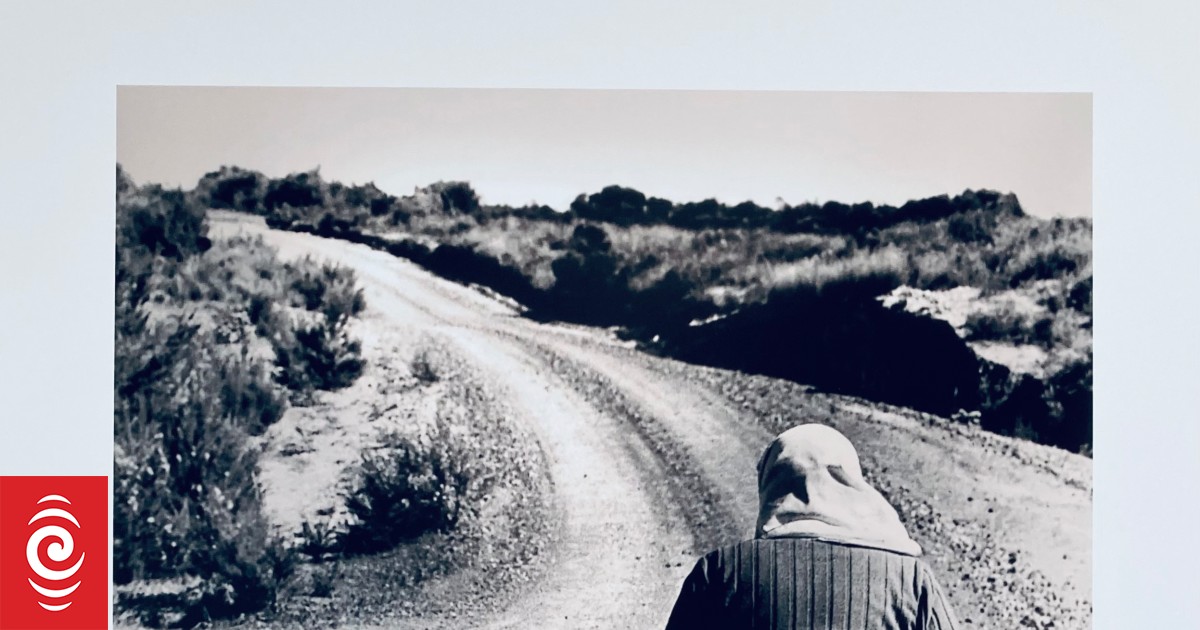
Hinerangi Cooper-Puru, daughter of the late Dame Whina Cooper, at an Significant Natural Areas protest hīkoi in Kaikohe in 2021.
Photo: RNZ/ Peter de Graaf
Dame Whina Cooper’s daughter says a treasure trove of historic photos – including images of her late mother – should never have left Aotearoa.
The photos are part of the Fairfax newspaper archive, which was shipped to America as part of an ill-fated digitisation project and almost ended up in landfill after the US company went under.
The Duncan Miller Gallery in Los Angeles – which specialises in 20th and 21st century photos – saved the images and has been working since to restore and return them to New Zealand.
Hinerangi Cooper-Puru, of Panguru in Northland, welcomed news the images had been saved and thousands of photos of Māori life from the early 20th century have now been handed over to the National Library of New Zealand in Wellington.
However, she was concerned historically significant photos of Māori were still being sent overseas without permission from iwi or the subject’s families.
“We want it stopped. This must not happen again,” she said.
“They were going to dump the pictures they were hoping to maybe sell, which is not good. I’m concerned that they ever left our country, Aotearoa.”
Cooper-Puru said she was looking forward to seeing the photos of her mother.
US owner defends sale
Gallery owner Daniel Miller says saving the photos from going to landfill cost his business a lot of money.
He has defended selling the Māori photos in the collection to the National Library, rather than returning them for free.
The collection of 5300 images of tangata whenua was independently valued at $340,000, but Miller said the National Library had got it for less than that.
The photos had always been in private hands and when a company brought them to the US it had used the photos as security against a $US14 million ($NZ22m) loan it got from a bank, he told Morning Report from Los Angeles, where he is based.
Miller said he paid the bank that had taken ownership of the photos “a lot of money” to buy them and save them.

Dame Whina Cooper walking hand-in-hand with a moko during the 1975 Māori Land March.
Photo: Supplied / Michael Tubberty
“There’s nothing free here and the fact is we had this particular set of Māori works, we had a valuation done … I negotiated with the library, they bought this considerably under the valuation.
“So we had private people willing to pay the full cost but I didn’t want to do that because it was the wrong thing to do.”
Miller agreed he had his hands full dealing with the large trove of about 1.4 million photos.
Anything of Māori content was separated out from the rest of the archive and he delivered these himself to the National Library in Wellington last month.
The set consisted of three large boxes containing 5300 photos. He said he made sure he turned up at the airport early so he could tell staff how precious the content was and he needed to “babysit them” through security.
He said it would overwhelm the National Library if it took the entire collection.
“I would love it if they did – I was hoping they would.”
All the photos are being split up into various sections.
He has approached the national associations of leading sports including rugby, cricket, tennis and golf to see if they are interested in retrieving the photographic history of their sport.
“We’re getting some movement, it’s a bit slow but we’re getting some movement.”




